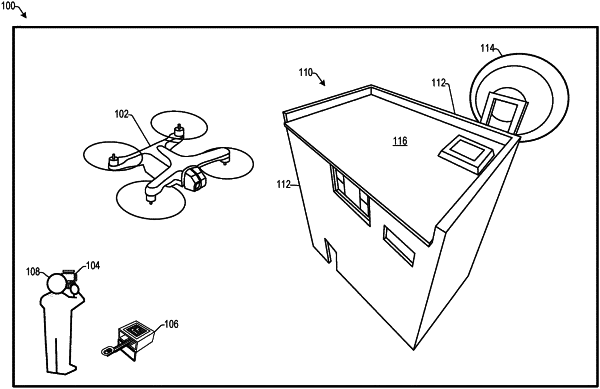| CPC G05D 1/0094 (2013.01) [B64C 39/024 (2013.01); B64D 31/06 (2013.01); B64D 47/08 (2013.01); G05B 13/0265 (2013.01); G05B 17/02 (2013.01); G05D 1/0088 (2013.01); G05D 1/101 (2013.01); G06T 7/55 (2017.01); G06T 7/74 (2017.01); G06T 17/00 (2013.01); G06T 19/20 (2013.01); G06V 20/13 (2022.01); G06V 20/64 (2022.01); H04N 23/64 (2023.01); H04N 23/695 (2023.01); H04N 23/90 (2023.01); B64U 10/13 (2023.01); B64U 2101/30 (2023.01); G06T 2207/10032 (2013.01); G06T 2207/20221 (2013.01); G06T 2219/2004 (2013.01)] | 20 Claims |

|
1. An unmanned aerial vehicle (UAV) comprising:
one or more image sensors;
a propulsion mechanism; and
one or more processors configured by executable instructions to:
receive, from a computing device, an indication of a target and one or more scan parameters for scanning the target;
capture, with the one or more image sensors, while the UAV is in flight, a plurality of images of the target;
compare a first image of the plurality of images with a second image of the plurality of images to determine a difference between a current frame of reference position for the UAV and an estimate of an actual frame of reference position for the UAV; and
determine, based at least on the difference, and while the UAV is in flight, an update to a three-dimensional (3D) model of the target.
|